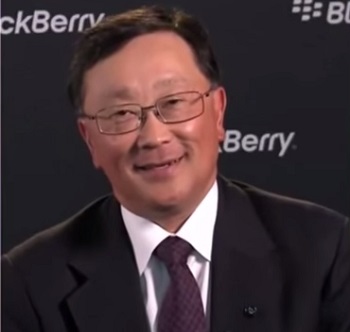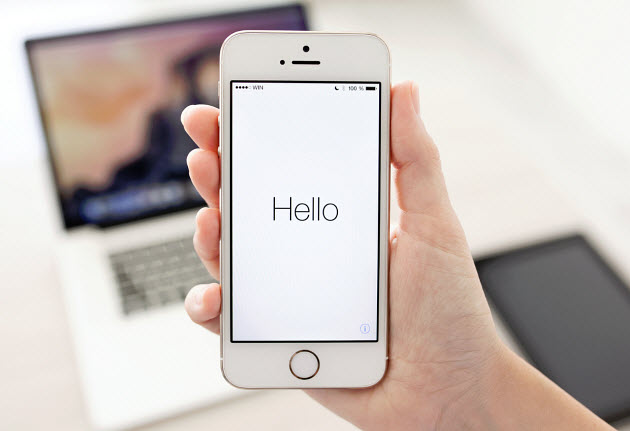As the company works to rebuild itself, John Chen has explained that good talent is hard to keep.
BlackBerry CEO John Chen has now stated that it is not only difficult to find good mobile technology talent, but it is also very hard to keep it, which is clearly a challenge that the company is facing as it works on rebuilding.
This challenge becomes much harder when trying to hire on a last-minute basis, while avoiding lost time.
Chen spoke in a Thomson Reuters interview, last week, at the third annual Waterloo Innovation Summit in Canada. He explained that the main problem is to figure out how not to waste time at the last minute when talent is needed. In 2011, BlackBerry mobile technology had been an employer of 11,000 people in the Waterloo Region of Ontario, Canada.. However, today’s figure has dwindled to 2,700 workers in 2015.
During that period, a great deal of mobile technology talent was lost from the company as it tried to survive.
 In the interview, Chen expressed that “We lost a lot of good people as a company. Not everybody is cut out to be a turnaround person or be in a turnaround environment. But if you can do it – I love it -it is fascinating, it is fabulous. The reward that comes at the end, the feeling of it, is hard to describe.”
In the interview, Chen expressed that “We lost a lot of good people as a company. Not everybody is cut out to be a turnaround person or be in a turnaround environment. But if you can do it – I love it -it is fascinating, it is fabulous. The reward that comes at the end, the feeling of it, is hard to describe.”
Chen is now coming close to completing his second year at the helm of BlackBerry. The company had once been the leader in the smartphone category, but its slice of the market is now under 1 percent. The CEO’s strategy involves attracting and keeping the best talent in order to ensure the company’s return to success. In his opinion, this is the greatest challenge that the company is facing, as the goal is to change the turnaround plan from having been the smartphone manufacturing leader into being a company with a focus on internet, software, and services.
The BlackBerry CEO has said that the mobile technology market and its competition can’t be allowed to dictate the future of this category. Instead, he believes that it is up to the participants to carve out the path, and that requires time and patience to accomplish effectively.
Users of iPhones may or may not be comforted by the fact that their smartphones may know the sound of their voices.
Apple users have become very used to the sound of the vocal command feature of their devices, and now the Siri voice recognition technology is actually allowing the device to recognize the sound of its own owner.
This allows Siri to compare the voice of the owner of the smartphone to that of other people.
This new feature has been added to the Siri set up process in the latest iOS 9.1 GM. As there is an M9 motion processor built into the latest iPhone devices, this makes it possible for Siri voice recognition to remain functional 24/7. The reason, said the Tech Times, was because the co-processor of the device is always on. Furthermore, due to the latest set up process, these smartphone owners can actually train the recognition feature of Siri by using the built-in device microphone and speaking a few words.
This gives the Siri voice recognition the ability to become accustomed to the voice of a device’s specific user.
 When a phrase has not been stated in a way that is clear, Siri will continue to request that the user repeat it until the entire line has been completely understood. In order to take advantage of the individual voice recognition from Siri, there are five steps that a user must complete. For most people, this should be relatively straight-forward.
When a phrase has not been stated in a way that is clear, Siri will continue to request that the user repeat it until the entire line has been completely understood. In order to take advantage of the individual voice recognition from Siri, there are five steps that a user must complete. For most people, this should be relatively straight-forward.
That said, there has yet to be official confirmation as to whether or not the outcome of requests will be any different depending on whether or not it is the user’s voice that is detected during a query. Moreover, it isn’t entirely clear whether or not iPhone owners who use their devices bilingually will need to repeat the training in their two different languages. That said, Siri can speak 25 different languages, so it is likely a good idea for an owner to choose his or her primary language for the training for Siri’s recognition of his or her voice.
Before the latest update to iOS, the Siri voice recognition feature required users to take a few exercises. Only after that point could the “Hey, Siri” feature be used because the digital assistant would be able to tell who was talking.
 In the interview, Chen expressed that “We lost a lot of good people as a company. Not everybody is cut out to be a turnaround person or be in a turnaround environment. But if you can do it – I love it -it is fascinating, it is fabulous. The reward that comes at the end, the feeling of it, is hard to describe.”
In the interview, Chen expressed that “We lost a lot of good people as a company. Not everybody is cut out to be a turnaround person or be in a turnaround environment. But if you can do it – I love it -it is fascinating, it is fabulous. The reward that comes at the end, the feeling of it, is hard to describe.”
 When a phrase has not been stated in a way that is clear, Siri will continue to request that the user repeat it until the entire line has been completely understood. In order to take advantage of the individual voice recognition from Siri, there are five steps that a user must complete. For most people, this should be relatively straight-forward.
When a phrase has not been stated in a way that is clear, Siri will continue to request that the user repeat it until the entire line has been completely understood. In order to take advantage of the individual voice recognition from Siri, there are five steps that a user must complete. For most people, this should be relatively straight-forward.